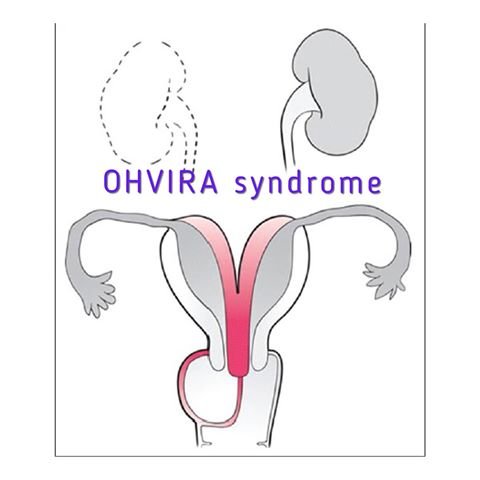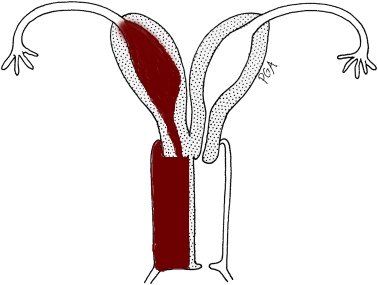
A rare case of OHVIRA Syndrome | Health & Medications
During my clinical clerkships yesterday I came across an extremely rare congenital malformation syndrome called Ostructed Hemi-Vagina, Ipsilateral Renal Agenesis (OHIVA), also known as Herlyn-Werner-Wunderlich syndrome. This syndrome is the triad of uterus didelphys (two uteruses), obstructed hemivagina (half the vagina is obstructed) and ipsilateral renal agenesis (meaning only one kidney). This syndrome was first reported somewhere between 1922 and 1950, due to differing accounts.
About 10% of infants are born with abnormality of the genitourinary system (mullerian anomalies). The true incidence of the OHVIRA syndrome is not precisely known, but according to the limited literature available it is estimated to be between 0.1 - 3.5% of all mullerian anomalies. In fact, if you examine the literature there are only a few case reports of this rare genetic anomaly!

Case Presentation
The patient was a 14 year old female who presented with right sided, lower abdominal pain which had persisted for several days. Urine culture was consistent with a urinary tract infection and she was started on empiric antibiotic therapy. CT of the abdomen showed right sided Ipsilateral Renal Agenesis (which in layman term's means she only had one kidney, on the left side). Her last know menstruation was about a week prior to presentation. Microbiology report for the urine culture came back positive for E.coli growth for which is was transitioned to definitive antimicrobial therapy for treatment of the UTI. She also had a MRI of the abdomen done, which revealed the diagnosis of OHVIRA syndrome.
OHVIRA Syndrome
OHVIRA syndrome is an extremely rare genetic anomaly which usually occurs during week 5 to 8 of gestation (fetal development). However, due to the nature of the anomaly, the congenital obstructive malformations of the female genital tract do not usually become clinically relevant until adolescent years. In fact, most case reports of OHVIRA syndrome show that is it most often discovered during the adolescent years, with a median age of diagnosis of ~ 14 years of age.

Vaginal or uterine obstructive anomalies typically present as cyclic or recurrent pelvic pain due to obstructed menstruation. However, the presence of menarche does not exclude obstructive anomalies of the gynecologic tract, because the obstruction can be unilateral and might involve derivatives of 1 Mullerian duct. Thus retention of menstrual discharge occurs on only one side, which gives the appearance of a normal menstruation to the female. However, as the menstrual discharge further builds up it causes progressive pelvic pain or dysmenorrhea and often times progresses into infections of the genitourinary tract.

Recent Posts:
- The Neuroprotective effects of Melatonin against Amphetamine-Induced Neurotoxicity
- Natural Therapies for the Prevention and Treatment of Influenza and the Common Cold
- The Flu Vaccine: Only 10% Effective – Is it still worth it?
- Ages & Stages of Childhood Development
- Common Infant Conditions


